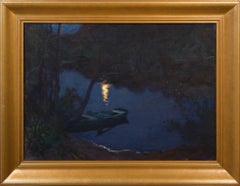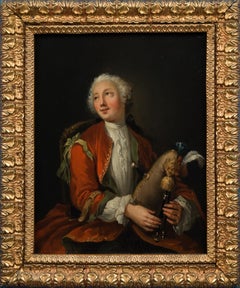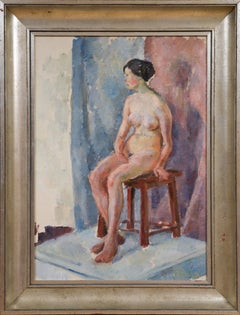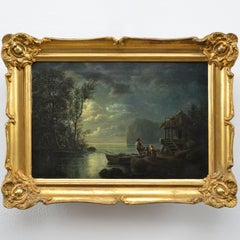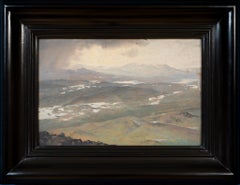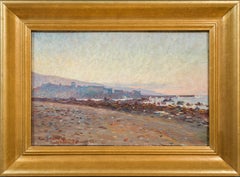Sweden - Figurative Paintings
Early 1900s Symbolist Sweden - Figurative Paintings
Canvas, Oil
18th Century Rococo Sweden - Figurative Paintings
Oak, Oil, Wood Panel
1920s Modern Sweden - Figurative Paintings
Oil, Canvas
Late 19th Century Realist Sweden - Figurative Paintings
Canvas, Wood, Oil
1920s Realist Sweden - Figurative Paintings
Oil, Wood Panel
1890s Impressionist Sweden - Figurative Paintings
Oil, Board
1880s Romantic Sweden - Figurative Paintings
Oil, Wood Panel
1850s Realist Sweden - Figurative Paintings
Canvas, Oil
1870s Realist Sweden - Figurative Paintings
Canvas, Oil
16th Century Old Masters Sweden - Figurative Paintings
Oil, Wood Panel
Early 19th Century Sweden - Figurative Paintings
Oil, Panel
1920s Impressionist Sweden - Figurative Paintings
Canvas, Oil
17th Century Old Masters Sweden - Figurative Paintings
Copper
1880s Impressionist Sweden - Figurative Paintings
Canvas, Oil, Board
Mid-19th Century French School Sweden - Figurative Paintings
Oil, Wood Panel
18th Century Old Masters Sweden - Figurative Paintings
Canvas, Oil
Late 18th Century Old Masters Sweden - Figurative Paintings
Canvas, Oil
1930s Post-Impressionist Sweden - Figurative Paintings
Canvas, Oil
Late 19th Century Impressionist Sweden - Figurative Paintings
Canvas, Oil
18th Century Old Masters Sweden - Figurative Paintings
Oil, Wood Panel
1950s Constructivist Sweden - Figurative Paintings
Paper, Crayon, Pastel, Mixed Media
Early 1600s Old Masters Sweden - Figurative Paintings
Copper
19th Century Sweden - Figurative Paintings
Canvas, Oil
Early 20th Century Impressionist Sweden - Figurative Paintings
Canvas, Oil
1870s Impressionist Sweden - Figurative Paintings
Canvas, Oil
Early 20th Century Romantic Sweden - Figurative Paintings
Canvas, Oil
Early 17th Century Old Masters Sweden - Figurative Paintings
Slate
1910s Post-Impressionist Sweden - Figurative Paintings
Canvas, Oil
Early 19th Century Old Masters Sweden - Figurative Paintings
Oil, Wood Panel
Late 18th Century Old Masters Sweden - Figurative Paintings
Oil, Wood Panel
17th Century Old Masters Sweden - Figurative Paintings
Canvas, Oil
Late 19th Century Realist Sweden - Figurative Paintings
Canvas, Wood, Oil
1870s Realist Sweden - Figurative Paintings
Canvas, Oil
1910s Post-Impressionist Sweden - Figurative Paintings
Canvas, Oil
17th Century Old Masters Sweden - Figurative Paintings
Oak, Oil, Panel
Early 20th Century Post-Impressionist Sweden - Figurative Paintings
Canvas, Oil
Late 19th Century Romantic Sweden - Figurative Paintings
Oil, Board
17th Century Old Masters Sweden - Figurative Paintings
Copper
1840s Romantic Sweden - Figurative Paintings
Canvas, Oil
1930s Realist Sweden - Figurative Paintings
Masonite, Oil
Early 2000s Pop Art Sweden - Figurative Paintings
Acrylic
Early 20th Century Sweden - Figurative Paintings
Canvas, Oil
Late 19th Century Romantic Sweden - Figurative Paintings
Canvas, Oil
1890s Other Art Style Sweden - Figurative Paintings
Canvas, Oil
1660s Dutch School Sweden - Figurative Paintings
Canvas, Oil
1920s Romantic Sweden - Figurative Paintings
Canvas, Oil
17th Century Old Masters Sweden - Figurative Paintings
Oil, Wood Panel
1890s Impressionist Sweden - Figurative Paintings
Oil, Wood Panel
Late 18th Century Old Masters Sweden - Figurative Paintings
Oil, Wood Panel
1880s Romantic Sweden - Figurative Paintings
Canvas, Oil
1910s Post-Impressionist Sweden - Figurative Paintings
Canvas, Oil
1690s Baroque Sweden - Figurative Paintings
Canvas, Wood, Oil
Late 19th Century Realist Sweden - Figurative Paintings
Canvas, Oil, Board
Late 19th Century Realist Sweden - Figurative Paintings
Oil, Wood Panel
Early 20th Century Romantic Sweden - Figurative Paintings
Canvas, Oil
1910s Post-Impressionist Sweden - Figurative Paintings
Canvas, Oil
1950s Naturalistic Sweden - Figurative Paintings
Oil, Board
1880s Romantic Sweden - Figurative Paintings
Canvas, Oil
Early 1700s Old Masters Sweden - Figurative Paintings
Oil, Wood Panel
Late 18th Century Realist Sweden - Figurative Paintings
Canvas, Wood, Oil
Read More
See Kent Monkman’s Magical Realist Take on Frontier History
With a solo show at the Denver Art Museum and a commission from the Met, the Cree Canadian painter has become an international sensation.
Cecilia Vicuña Merges Politics, Science and Spirituality in Her Poetic Art
The Chilean creator, who has been living in exile in New York for decades, is having a major moment, receiving the biggest exhibitions, commissions and awards an artist could dream of.
